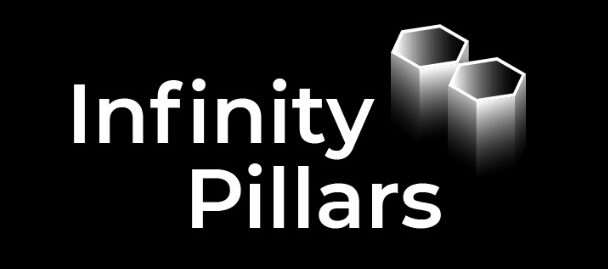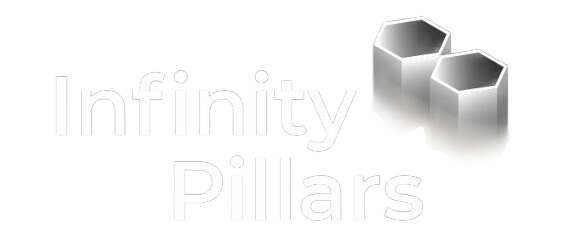
Table of Contents

Introduction
Welcome to the quirky world of choosing the right technology! In this blog, we’ll explore the factors to consider when selecting business software. But hold on tight, we won’t bore you with lengthy essays. Let’s keep it casual, shall we?
So, picture this: you’re on a quest to find the perfect software for your business. What should you look for? Well, first, let’s understand your business needs. What are your goals? How can the software align with them? And don’t forget to assess your current systems.
Ready? Let’s dive in!
Understanding Your Business Needs
Let’s start by understanding your business needs.
First things first, you need to identify your goals. What are you trying to achieve with this software? Are you looking to streamline your operations, improve communication, or maybe conquer the world? Okay, maybe not the last one, but you get the point. Knowing your goals will help you narrow down the options and find a software solution that aligns with your vision.
Next up, assess your current systems. Take a good, hard look at what’s working and what’s not. Are you using outdated software that makes you want to pull your hair out? Are there any gaps in your current systems that need to be filled? Understanding your pain points and areas for improvement is crucial in finding a software solution that will address your specific needs.
Now, onto the next topic to consider – Budget and Cost Considerations.
Budget and Cost Considerations
Ah, the dreaded topic of budget and cost. Let’s face it, no one loves spending money, especially when it comes to business software. But hey, it’s a necessary evil, right? So let’s dive right into it.
First things first – determine your budget. How much are you willing to invest in your software? Don’t worry, the options are endless. You can go for the wallet-friendly option if you’re low on funds, or splash the cash on fancy features if you’re feeling generous. It’s all up to you.
Next, evaluate the total cost of ownership. Remember, it’s not just about the upfront cost, but also the long-term expenses. What’s the maintenance cost? Are there any hidden fees? Will you need to hire a team of tech wizards to manage it? Consider all these factors before you swipe that credit card.
Now, let’s be honest, nobody wants to spend a fortune on something that turns out to be a disaster. So, keep in mind that sometimes investing a bit more upfront can save you a whole lot in the long run. That cheap software might come back to haunt you with its constant bugs and glitches. Nobody has time for that, right?
And now, onto the exciting topic of customizability and scalability.
Customizability and Scalability
Customizability and scalability are crucial factors to consider while choosing the right technology for your business software. Let’s dive into why these aspects matter and how they can impact your decision-making process.
Assessing the software’s customization options is important because each business has unique needs and requires a certain level of flexibility. You don’t want to end up with a rigid software that cannot be tailored to fit your specific requirements. So, make sure to consider the extent to which the software can be customized to align with your business processes. This will ensure that you can optimize its functionality to suit your needs and leverage its full potential.
Thinking about future growth and scalability is equally vital. Your business is not going to stay the same forever, right? You want to choose a software that can adapt and grow with your business without causing a major headache. Consider the software’s ability to accommodate increased data volume, additional users, and new functionalities as your business expands. Scalability ensures that you won’t outgrow your software too quickly and can avoid the hassle of switching to a new system in the near future.
User-Friendliness and Training
So you’re in the market for some business software, huh? Well, lucky for you, we’ve got the perfect topic to address your needs – User-Friendliness and Training. Because really, who wants to deal with a clunky, confusing interface and zero support? Not you, my friend!
When it comes to evaluating the user interface (UI), it’s important to consider whether it’s intuitive and easy to navigate. You don’t want to waste your precious time fumbling around with buttons and menus like a blindfolded monkey. Trust me, been there, done that. So, look for clean designs, logical workflows, and user-friendly features that make your life easier, not harder.
But hold on, that’s not all! You also need to consider the training and support options. Because let’s face it, no matter how intuitive the software is, there may still be a learning curve.So, make sure the software provider offers comprehensive training programs, helpful documentation, and responsive support channels. You’ll thank me later!
Remember, my dear reader, the key to a successful software experience lies in its user-friendliness and the availability of adequate training and support. Don’t settle for less. Now, let’s move on to the next exciting topic, shall we
Integration and Compatibility
First things first, you need to assess the compatibility of the software with your existing systems. I know, it sounds like a blast, right? But hey, you don’t want to end up with a software that just doesn’t play nice with your current setup. Trust me, it’s like trying to fit a square peg into a round hole.
Next up, you need to consider the integration capabilities of the software. Can it talk to your other systems? Can it share data seamlessly? These are the questions you should be asking. Because let’s be real, you don’t want software that’s like that one friend who just can’t get along with anyone.
Data Security and Privacy
When it comes to choosing the right technology for your business software, data security and privacy should be at the top of your priority list. After all, you don’t want your valuable information falling into the wrong hands, do you? So, let’s dig into the key points you need to consider when evaluating software in terms of security measures and data protection.
First off, evaluating the software’s security measures is crucial. You don’t want to end up with a system that has more holes than a piece of Swiss cheese. Look for features like encryption, access controls, and regular security updates. You want your software to have more layers of protection than an overzealous parent wrapping their kid in bubble wrap.
Now, let’s turn our attention to data protection and privacy compliance. You want software that respects your privacy like a bodyguard respects a celebrity’s personal space. Look for software that complies with relevant data protection regulations such as GDPR or HIPAA, depending on your industry. You don’t want your customers’ data floating around like a helium balloon at a birthday party.
Remember, choosing a software that prioritizes data security and privacy is essential for protecting your business and your customers. So, don’t overlook this crucial aspect when making your decision.
Real-Life Examples of Native and Hybrid Technology
- Native App Development:
Native app development involves building an application specifically for a particular platform (e.g., iOS or Android) using the platform’s native programming languages, tools, and development environment.
Example: Spotify is a music streaming app that is available on both Android and iOS. The app is built using native technologies for each platform, which means that it is able to take advantage of the specific features and capabilities of each platform.
- Hybrid App Development:
Hybrid app development involves using web technologies like HTML, CSS, and JavaScript to create a single codebase that can be deployed on multiple platforms (iOS, Android, etc.). Hybrid apps are essentially web applications running within a native container, which allows them to be distributed through app stores.
Example:Instagram is a popular photo-sharing app that is available on both Android and iOS. The app is built using a hybrid framework called Ionic, which allows developers to use web technologies like HTML, CSS, and JavaScript to create apps that can be run on both platforms.
How Infinity Pillars Can Help
Infinity Pillars, a leading software technology company, stands out in the industry by providing comprehensive and tailored solutions for businesses of all sizes. Our expertise spans various technologies.
Conclusion
Choosing the right technology for your software is a critical decision that can significantly impact your business’s success. By considering factors like Understanding Your Business Needs, Budget and Cost Considerations, Customizability and Scalability, User-Friendliness and Training, Integration and Compatibility, Data Security and Privacy.
Partnering with Infinity Pillars ensures that you receive expert guidance and customised solutions that cater to your unique needs, setting you on a path to success in the ever-evolving digital landscape.





